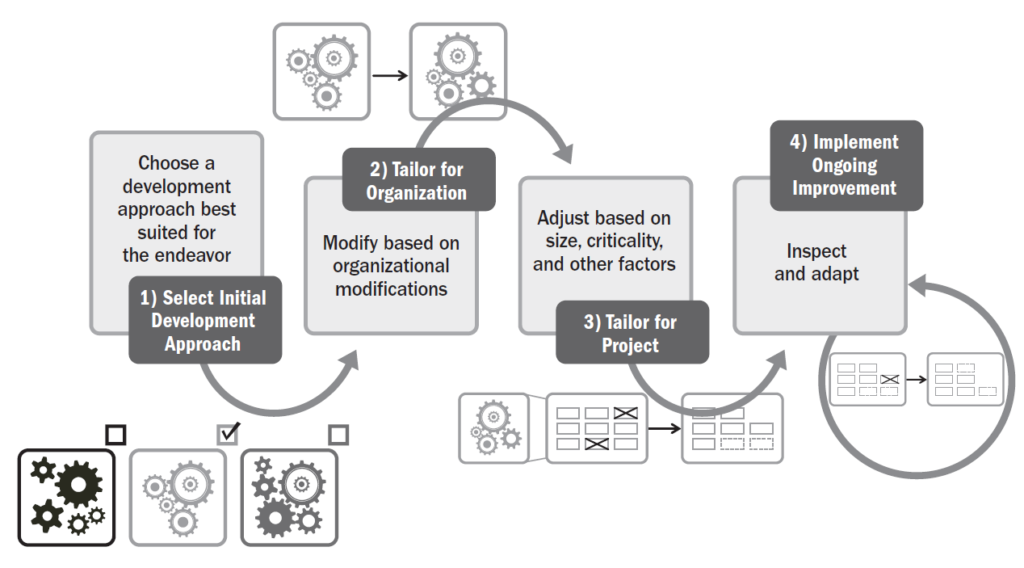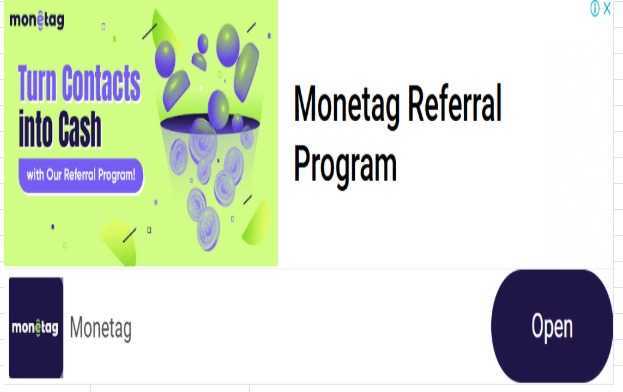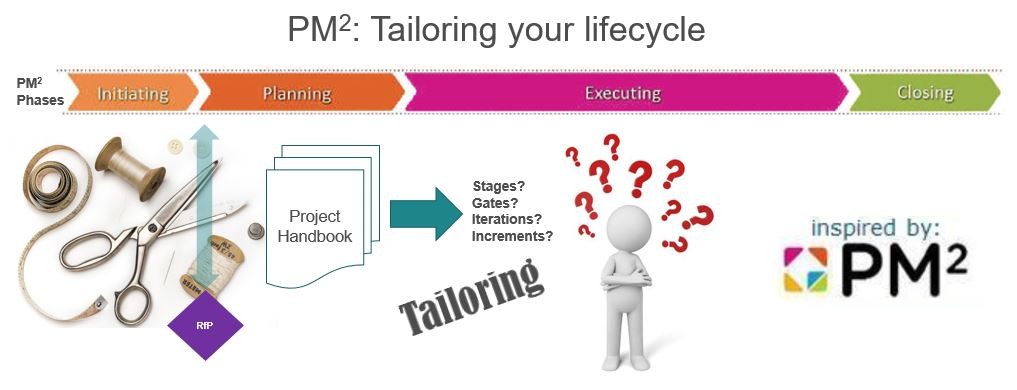Here’s a well-structured explanation for the topic “Tailoring – Life Cycle and Development Approach Selection” in the context of project management (based on the PMBOK® Guide and modern practices):
Tailoring: Life Cycle and Development Approach Selection
What is Tailoring in Project Management?
Tailoring is the process of selecting and adapting the project management processes, tools, techniques, life cycles, and development approaches to fit the unique characteristics of a project. No two projects are the same—tailoring ensures the approach aligns with the project’s size, complexity, risk, stakeholder needs, and organizational context.
Why Tailor the Life Cycle and Development Approach?
The life cycle and development approach of a project form the foundation of how work is planned, executed, monitored, and delivered. Proper tailoring ensures:
- Alignment with stakeholder expectations
- Efficient use of resources and time
- Support for desired levels of flexibility or predictability
- Effective risk management
- Improved value delivery
Types of Project Life Cycles
- Predictive (Waterfall) Life Cycle:
- Follows a linear, sequential process.
- Best for projects with well-defined requirements and low uncertainty.
- Tailoring may involve adding extra layers of documentation or reducing formal processes for smaller projects.
- Iterative Life Cycle:
- Focuses on repeated cycles to refine the product.
- Suitable for projects with evolving requirements.
- Tailoring may involve adjusting the number or length of iterations.
- Incremental Life Cycle:
- Delivers work in chunks or increments, each adding value.
- Often combined with iterative methods.
- Tailoring depends on how frequently deliverables need to be released.
- Agile/Adaptive Life Cycle:
- Emphasizes collaboration, flexibility, and fast feedback loops.
- Ideal for high-uncertainty projects or those needing frequent adaptation.
- Tailoring may involve selecting the right agile framework (e.g., Scrum, Kanban, SAFe).
- Hybrid Life Cycle:
- Combines predictive and adaptive approaches.
- Tailoring involves balancing upfront planning with iterative delivery to suit different aspects of the project.
Tailoring Considerations for Life Cycle Selection
When tailoring the life cycle and development approach, consider:
Factor | Tailoring Consideration |
Project Characteristics | Size, duration, complexity, and criticality determine the needed level of structure. |
Requirements Stability | Stable = Predictive; Evolving = Iterative/Agile. |
Stakeholder Engagement | Continuous interaction favors Agile or Hybrid approaches. |
Risk and Uncertainty | High risk may require adaptive approaches for flexibility and quick responses. |
Team Capabilities | Agile requires cross-functional, self-organizing teams. |
Organizational Culture | Conservative orgs may prefer predictive; startups may lean Agile. |
Compliance Needs | Regulated industries may require tailoring predictive approaches with compliance steps. |
Steps for Tailoring Life Cycle and Development Approach
- Assess the Project Environment: Understand constraints, governance, and organizational assets.
- Evaluate Stakeholder Needs: Identify how involved and flexible stakeholders want to be.
- Analyze Product Requirements: Review clarity, changeability, and technical complexity.
- Select Appropriate Life Cycle Model: Based on the analysis above.
- Customize Tools and Processes: Adjust meetings, documentation, roles, and metrics.
- Review and Adapt Continuously: As the project evolves, the tailored approach should too.
Example Scenarios
- A banking software upgrade may be best served with a predictive model due to regulatory requirements.
- A new mobile app startup might thrive on a hybrid approach, using agile for the UI/UX and predictive for backend integration.
- An R&D project in biotech might use an iterative approach to refine prototypes.
Conclusion
Tailoring the life cycle and development approach is not about breaking the rules—it’s about making the rules work for your project. Smart tailoring leads to better project outcomes by aligning the methodology with the needs, risks, and realities of the environment in which the project exists.



